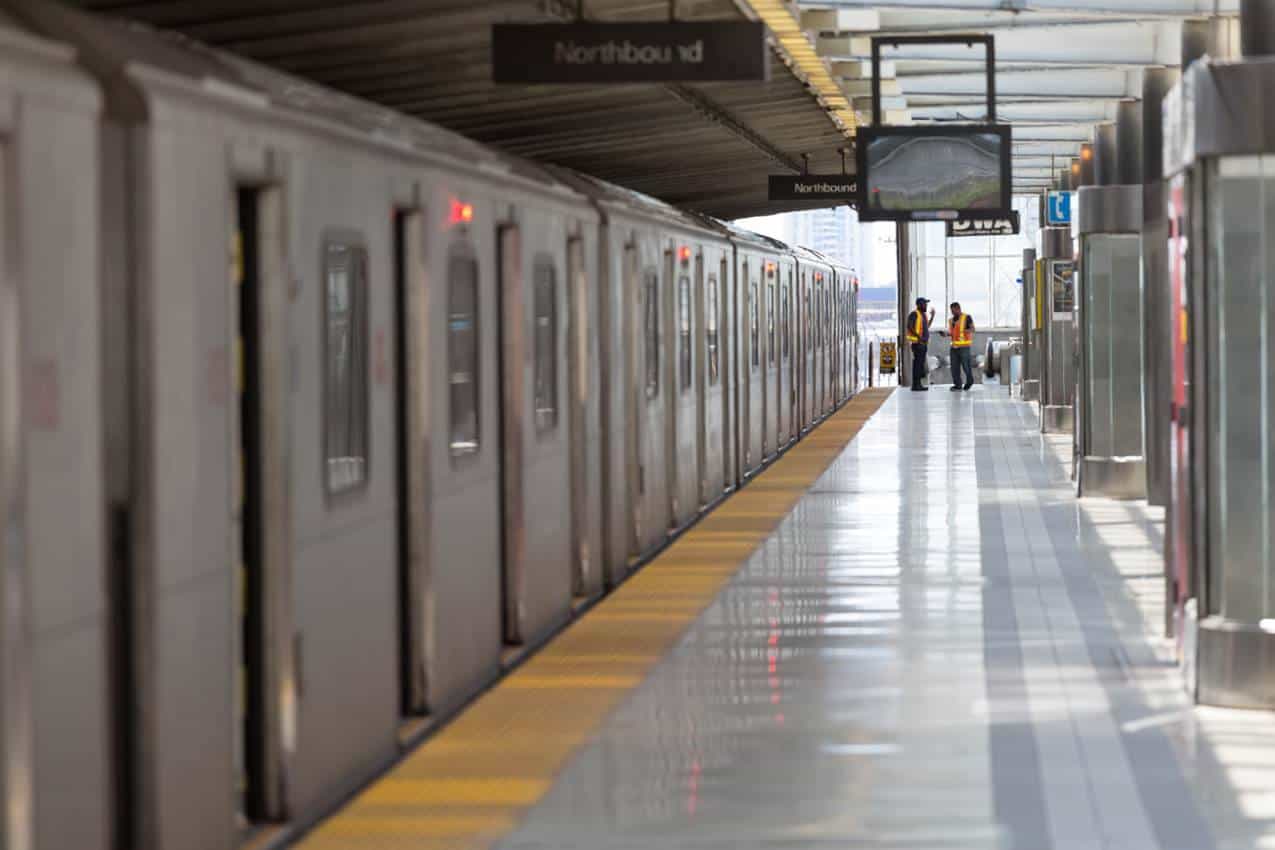Will the Doug Ford Government’s Upload of the TTC Impact Mississauga?
Published January 16, 2019 at 7:59 pm

To say that the newly elected PC government has changed the conversation in Ontario is an understatement.
Coming in like a wrecking ball, the Doug Ford-led PCs have vowed to reevaluate regional governments across the province (whether this will lead to amalgamations between major municipalities remains to be seen), cancelled funding for universities in Brampton, Milton and Markham, refrained from being clear about the future of the Hurontario LRT (although construction is proceeding as planned), cancelled green energy programs and vowed to upload the Toronto Transit Commission (TTC) system to the province.
“Our government is working to cut gridlock to get Ontarians moving,” says Lyndsey Vanstone in an Ontario News Now (the PC-owned and operated news channel) video. “Uploading the subway system to the province would eliminate excessive red tape to get transit projects built on time and on budget.”
So, what would an upload actually look like?
An upload means the province will be responsible for parts of the subway system. It will own the network and “make sure that it’s maintained to be safe and reliable.”
According to the Ontario government, the province will plan and expand the system, creating and extending lines, boring tunnels, laying tracks and overseeing new station construction.
The TTC will operate the subways and perform maintenance.
The promise to upload the transit system didn’t come as a surprise. The TTC, which is currently operated by the City of Toronto, boasts something the current provincial government desperately wants a hold of: Subways.
But expected or not, critics were quick to condemn the move (and what they called a concerning lack of transparency).
Earlier this month, Toronto City Councillor Gord Perks posted a letter he penned to the city manager on Twitter. In the letter, Perks expressed concern over the province’s move to keep advice it received about uploading the system confidential.
He argued that the secrecy flew in the face of previous discussions between the two levels of government.
“While the provincial government has argued that they cannot make the advice public because it is advice to the Cabinet, the province has on many occasions made proposals public through mechanisms such as white papers. Therefore although they can clearly make public the work done on their side, they have chosen not to,” he wrote.
“Given this, it seems to me that the province is unwilling to meet the conditions city council requires. Further, without these conditions being met, you are without authority to continue conversations with the province.”
But while conversations between Toronto and the province are–or will be–ongoing, the incoming upload begs an important question: What impact, if any, will the upload have on Mississauga and other GHTA municipalities?
According to the province, the upload will simply create a more efficient system that will benefit not just Toronto, but the entire GTA.
“Our message to Ontarians is we want to work collaboratively with the City of Toronto to upload the TTC so that we can focus on the commuter no matter where they are in the region to get them from Point A to Point B in the most time efficient manner, which is going to kickstart our economy and ensure that Ontario is moving along and that we return as the economic engine of Canada,” says Jeff Yurek, Minister of Transportation, in the video.
The province points out, correctly, that the TTC does not serve Toronto residents exclusively.
In a recent Toronto Sun op-ed, Kinga Surma, the parliamentary assistant to the minister of transportation and MPP for Etobicoke Centre, says that over 100,000 people switch between the subway and a regional transit agency, such as GO, MiWay or Brampton Transit, every day.
In the op-ed, she argues that the province can make the system more efficient by issuing zoning orders, compelling utility companies to fast track relocation work and appropriating land “more effectively.”
In the Ontario News Now video, Surma emphasized the regional benefit an upload would (or could) bring to surrounding cities.
“We want to build on budget, on time, faster. We want to provide that service, and the TTC, it’s a regional network now. There are people that are coming in from other parts of the province, other municipalities that rely on it as well. We need to make sure those areas are connected and linked.”
While it’s definitely true that people from Mississauga, Brampton, Oakville, Burlington and Milton (and other cities) use the subway, it’s not yet known whether or not such municipalities would benefit from another idea the Ford government has floated: Subway extensions into their backyards.
Last fall, Yurek made a speech at the Toronto Region Board of Trade and mentioned not just the upload, but the possibility of extending the subway system into the suburbs.
“Our government is stepping up to treat the subway network as a critical service not only to Torontonians but to rest of Ontario,” Yurek said. “This will allow (the province) to push the subway further into York, Peel and Durham Regions. We can prioritize projects based on what is best for all of Ontario, not just Toronto.”
The Ford government is not the first one to propose subways for the 905 region.
Believe it or not, Mississauga once rejected a subway extension. The city had a chance for one when Toronto was planning to extend the existing TTC subway network by the year 2011.
That plan included extending the Bloor Danforth westbound line into the Dixie GO station (as cited in this 2001 report), with possible further expansion all the way to the City Centre.
Ultimately, extending the Bloor Danforth subway into Mississauga was dead on arrival when the City Centre option was screened from further consideration because the Region of Peel didn’t support the project as part of their official plan, preferring instead a dedicated bus rapid transit corridor and an extension of the then-proposed Eglinton subway line (a line that was subsequently reburied by the Mike Harris Conservatives).
Now, it looks like the idea could become a reality.
But will a subway be a good fit for the Region of Peel (or Mississauga, if a review of regional government changes things drastically)?
Many are not convinced that Mississauga would have enough ridership to justify a subway extension and are more comfortable with the idea of completing the incoming Hurontario LRT project that will run from the Port Credit GO in the south to the Brampton Gateway Terminal at Steeles Ave. in the north.
Mississauga Mayor Bonnie Crombie recently emphasized the importance of the LRT–which the Ford government has been less than transparent about–in a December meeting with the premier.
“Our top priority was the LRT because 38,000 companies are or will be located along that line and 140,000 people already live there,” Crombie told insauga.com, adding that multiple residential developments—46, to be exact—are planned (albeit not all approved) for the city’s downtown core over the next 10 years.
“Those developments began because of the news of the LRT.”
Crombie also told insauga.com that possibility of a subway extension did not come up during the meeting, but she did suggest the city would be receptive to the idea should a proposed route connect with the LRT.
“No, he did not mention the subway. You need a lot of density and we can’t make that business case, but if they connect it to our LRT and if he wanted to build a subway to Mississauga, we wouldn’t say no.”
With the upload talks happening in earnest–and with the province suggesting that subway extensions into Peel are possible–it’s not too far-fetched to believe that a subway connection could be proposed–seriously proposed–for Mississauga in 2019.
The question is, how will subway extensions benefit the suburbs. When it comes to transit, we know we have to do something, but it’s not always easy to determine what that something is.
In the meantime, it seems prudent–and necessary–to proceed with the north/south LRT. While a subway might be nice, an LRT is essential.
Do you want to see a subway in Mississauga?
Cover photo courtesy of the TTC’s official Facebook page
INsauga's Editorial Standards and Policies








